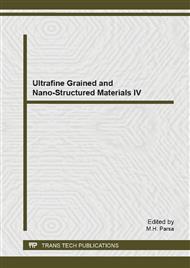p.627
p.632
p.638
p.643
p.649
p.654
p.659
p.665
p.670
Synthesis of Magnetic Nanocomposite Fe3O4 Coated Polypyrrole (PPy) for Chromium(VI) Removal
Abstract:
In recent years there is a continuously increasing worldwide concern for the growth of wastewater treatment technologies. The utilization of iron-oxide nanomaterials has attracted much interest due to their unique properties, such as extremely small size, high surface-area-to-volume ratio, surface modifiability, excellent magnetic properties and great biocompatibility. In this study, Fe3O4 coated polypyrrole (PPy) magnetic nanocomposite was prepared via in situ polymerization of pyrrole monomer for the removal of highly toxic Cr (VI).The PPy/Fe3O4 nanocomposite was characterized by field-emission scanning electron microscopy (FE-SEM), X-ray diffraction pattern (XRD) and Fourier-transformed infrared spectroscopy (FTIR). The adsorption properties of the PPy/ Fe3O4 nanocomposite for the removal of Cr (VI) were thoroughly studied. Up to 99% adsorption was found with 220 mg/L Cr (VI) aqueous solution at pH 2. Adsorption results showed that Cr (VI) removal efficiency by the nanocomposite decreased with an increase in pH. Adsorption kinetic was best described by the Pseudo-second-order rate model. Desorption experiment showed that in spite of the very poor recovery of the adsorbed Cr (VI); the regenerated adsorbent can be reused efficiently at least for two successive adsorptiondesorption-cycles without significant loss of its initial capacity.
Info:
Periodical:
Pages:
649-653
Citation:
Online since:
November 2013
Authors:
Keywords:
Price:
Сopyright:
© 2014 Trans Tech Publications Ltd. All Rights Reserved
Share:
Citation:


